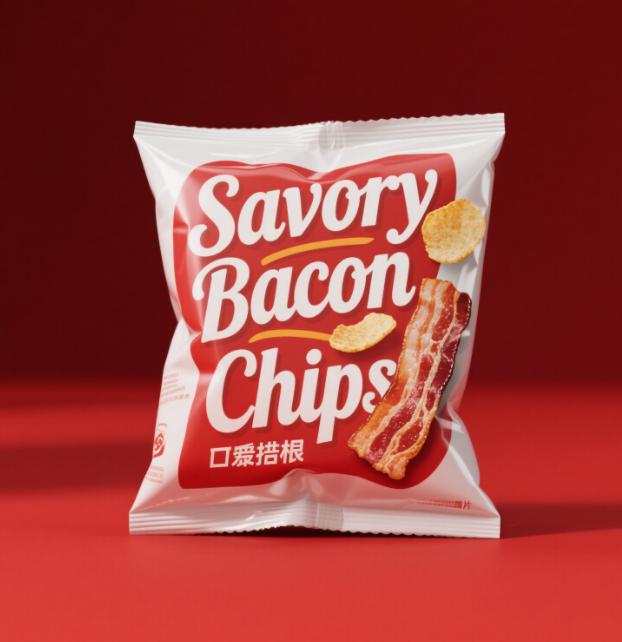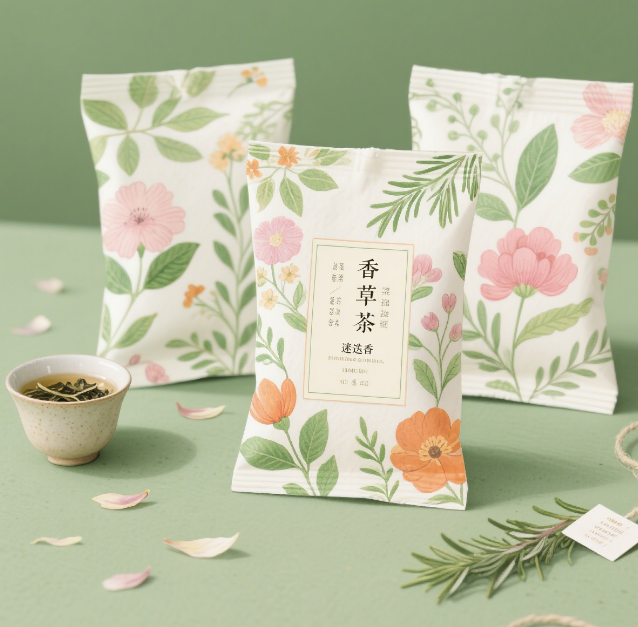Top Tips for Enhancing Your Food Packaging to Attract
In a crowded market, food packaging is more than just a container—it’s a silent salesperson. Great food packaging catches the eye, tells your brand’s story, and makes customers reach for your product instead of others. Whether you sell snacks, sauces, or frozen meals, enhancing your food packaging can boost sales and build loyalty. Let’s explore top tips to make your food packaging stand out and attract more customers.
1. Prioritize Clear, Bold Branding
Your food packaging should instantly communicate who you are. Strong branding helps customers recognize your product quickly, even from a distance.
- Logo placement: Put your logo front and center, in a size that’s easy to see. Avoid hiding it in small corners—shoppers should spot it in 2 seconds.
- Consistent colors: Use 2–3 brand colors that reflect your product (e.g., green for organic foods, bright red for spicy snacks). Stick to these colors across all packaging to build familiarity.
- Tagline or mission: A short phrase (like “Made with organic ingredients” or “Family recipes since 1990”) tells customers what makes your product special. Keep it simple and easy to read.
For example, a jar of organic jam with a large, colorful logo and the tagline “No added sugars” will attract health-conscious shoppers faster than a plain jar with tiny text.
2. Make the Product Visible
Customers want to see what they’re buying. Clear windows or transparent packaging let them check the food’s quality, freshness, or appearance—key for attracting purchases.
- Window design: Add a clear window on boxes (for cookies, pastries) or use transparent plastic (for salads, snacks). Ensure the window shows the most appealing part of the product (e.g., the gooey center of a chocolate bar).
- High-quality photos: If windows aren’t possible (e.g., for powders or sauces), use bright, realistic photos of the food. Avoid outdated or overly edited images—customers trust photos that match what’s inside.
- Show portions: For products like frozen meals, a photo of the cooked dish (not just the frozen block) helps customers imagine eating it, making them more likely to buy.
A bag of potato chips with a clear window showing the crispy chips inside will outperform a solid bag with no visibility.
3. Highlight Key Benefits Clearly
Shoppers scan packaging quickly, so highlight what makes your product unique in simple, bold text.
- Key claims: Use short phrases to emphasize benefits: “Gluten-free,” “No preservatives,” “High in protein,” or “Ready in 5 minutes.” Put these on the front, not buried in fine print.
- Icons for quick scanning: Symbols (like a leaf for organic, a clock for “quick to cook”) help customers understand benefits at a glance, especially if they don’t have time to read.
- Avoid jargon: Use simple words. Instead of “artisanal,” say “handmade.” Instead of “non-GMO,” explain it briefly if needed (“No genetically modified ingredients”).
A box of cereal with “10g protein per serving” in big letters will attract gym-goers faster than one that hides this info on the back.
4. Focus on Readability
Packaging with hard-to-read text will get passed over. Make sure all words are clear, even from a distance.
- Font choice: Use 1–2 easy-to-read fonts. Avoid fancy, curly fonts for important info (like ingredients or cooking instructions). Bold fonts work best for key messages.
- Text size: The product name and main benefits should be large enough to read from 2–3 feet away. Ingredients and small print can be smaller but still legible.
- Contrast: Ensure text stands out against the background. Black text on a white or light background, or white text on a dark background, works best. Avoid light text on light backgrounds (e.g., yellow on white).
A bottle of hot sauce with tiny, red text on an orange label will confuse shoppers—they won’t bother trying to read it.

5. Use Eye-Catching Colors and Design
Colors and visuals trigger emotions, so choose ones that match your product and attract your target audience.
- Color psychology: Warm colors (red, orange) make food look appetizing and attract attention—great for snacks or fast food. Cool colors (blue, green) suggest freshness or health—ideal for salads, smoothies, or organic products.
- Minimalism works: Cluttered packaging feels overwhelming. Use white space to highlight key elements (e.g., a single image of your product with a simple logo).
- Unique shapes: Stand out with unusual packaging shapes—like a sauce bottle shaped like a chili pepper, or a snack bag with a curved top. Just ensure it’s easy to store (shoppers hate packages that take up too much shelf space).
For example, a juice box with a bright green color and a simple image of fruit will catch parents’ eyes in the crowded drink aisle.
6. Prioritize Practicality and Convenience
Shoppers love packaging that’s easy to use. If your food packaging is frustrating to open or store, customers won’t buy it again—no matter how good it looks.
- Easy opening: Use tear tabs, flip lids, or resealable zippers (for snacks). Avoid packaging that requires scissors or struggles to stay closed after opening.
- Portability: For on-the-go foods (granola bars, trail mix), make packaging small, lightweight, and mess-free.
- Microwave-safe or recyclable: Clearly label if the packaging can go in the microwave (for frozen meals) or is recyclable. Eco-conscious shoppers will choose your product over non-recyclable options.
A bag of nuts with a resealable zipper is more appealing than a bag that must be rolled up and clipped—shoppers know it will stay fresh longer.
7. Tell a Story to Build Connection
People buy from brands they relate to. Use your food packaging to share a story that makes customers feel connected.
- Ingredient stories: “Our strawberries come from family farms in California” adds authenticity. Include a small photo of the farm or farmers.
- Heritage or tradition: “Recipes passed down from my grandmother” creates warmth and trust, especially for baked goods or sauces.
- Customer-focused messages: “Made for busy parents” or “Perfect for late-night snacks” shows you understand your audience’s needs.
A jar of pasta sauce with a note from the founder (“I created this sauce for my kids, who hate veggies—now they ask for seconds!”) will resonate more than a generic label.
8. Test and Get Feedback
What looks good to you might not attract customers. Test your packaging with your target audience before launching.
- Show samples: Ask 10–15 potential customers (e.g., parents, health enthusiasts) what they think. Do they notice the key benefits? Is the design appealing?
- Compare to competitors: Place your packaging next to similar products. Does it stand out? If not, tweak the colors or logo size.
- Track sales: After launching new packaging, monitor if sales go up. If not, ask shoppers why—maybe the text is hard to read or the design feels outdated.
FAQ
How much should I spend on enhancing food packaging?
Focus on small, impactful changes first (better logo placement, a window) if on a budget. For new brands, 10–15% of product costs on packaging is reasonable—investing more can boost sales long-term.
Should food packaging be eco-friendly?
Yes, when possible. Many shoppers prefer recyclable or biodegradable packaging. Even a “Recyclable” label can attract eco-conscious customers.
How can I make my packaging stand out in a crowded shelf?
Use bold colors, a unique shape, or a clear window. Ensure your logo and key benefit (e.g., “Organic”) are easy to spot from 3 feet away.
Is it better to have minimal or busy packaging?
Minimal is usually better. Cluttered packaging is hard to scan quickly. Focus on 1–2 key visuals and messages.
Should I include nutrition info on the front?
Yes, if it’s a selling point (e.g., “100 calories per serving” or “High in fiber”). Health-focused shoppers look for this info upfront.
Can packaging design affect brand loyalty?
Absolutely. If customers love your packaging (easy to use, tells a story), they’ll remember your brand and buy again.
How often should I update my food packaging?
Every 2–3 years, or if sales drop. Small updates (new colors, better font) keep it fresh without confusing loyal customers.
Table of Contents
- Top Tips for Enhancing Your Food Packaging to Attract
- 1. Prioritize Clear, Bold Branding
- 2. Make the Product Visible
- 3. Highlight Key Benefits Clearly
- 4. Focus on Readability
- 5. Use Eye-Catching Colors and Design
- 6. Prioritize Practicality and Convenience
- 7. Tell a Story to Build Connection
- 8. Test and Get Feedback
-
FAQ
- How much should I spend on enhancing food packaging?
- Should food packaging be eco-friendly?
- How can I make my packaging stand out in a crowded shelf?
- Is it better to have minimal or busy packaging?
- Should I include nutrition info on the front?
- Can packaging design affect brand loyalty?
- How often should I update my food packaging?




